Going Home Again and Leaving with the Big Sky
In 1940, a book by Thomas Wolfe titled You Can’t Go Home Again was published posthumously. The title has become a famous saying, the meaning of which indicates (to many), that while you can return to the place where you grew up, things will always have changed to the extent that they become unrecognizable, that those dreams one had as a child are gone; that while things were once one way, time has swept them away.
I returned to my hometown of Edmonton, Alberta in November of 2021. I suppose I knew it would be different. My friends have grown up and moved on from sporting mohawks and safety pin earrings to khaki pants and polo shirts.
What I found remarkable, though, was that while my friends had changed and the city had grown, so much was both wonderfully and eerily the same.
Knowing I would need to document this trip I brought along my Mamiya M645 1000s, a RealitySoSubtle 6×6, my Canon F1New, and several rolls of film. What I wanted to catch most was the city as it woke, and as it wound down for the day. I wanted to add some colour to what, in my mind, was a dreary, sad, broken city, a boom-and-bust economy that gave people the confidence to buy two pickups, an ATV, and a jet-ski, only to have them all repossessed a year later when oil prices crashed.
I grew up to the east of Edmonton in a hamlet that is nestled up against the row of oil refineries and chemical plants that is cleverly referred to as Refinery Row. When the sky is open and the sun is rising, the smoke from the refineries creates colourscapes that dazzle, confuse, and upset the viewer. The morning I went out, the sky was covered in cloud, which seemed a bit more realistic to me.
The shots below were taken at around 6:30AM, right around the time of shift change at an oil refinery, as caffeinated and nicotine-ified workers arrived to climb impossibly tall ladders, monitor walls of gauges, and ensure the proper refinement of Alberta’s most famous export. The trees in foreground, stripped bare of their finery stood in defiance of the plumes of ghastly, poisonous gas around them. Triumphant in their boldness, they live in stark contrast to the industrialization of their environment—a silent protest.
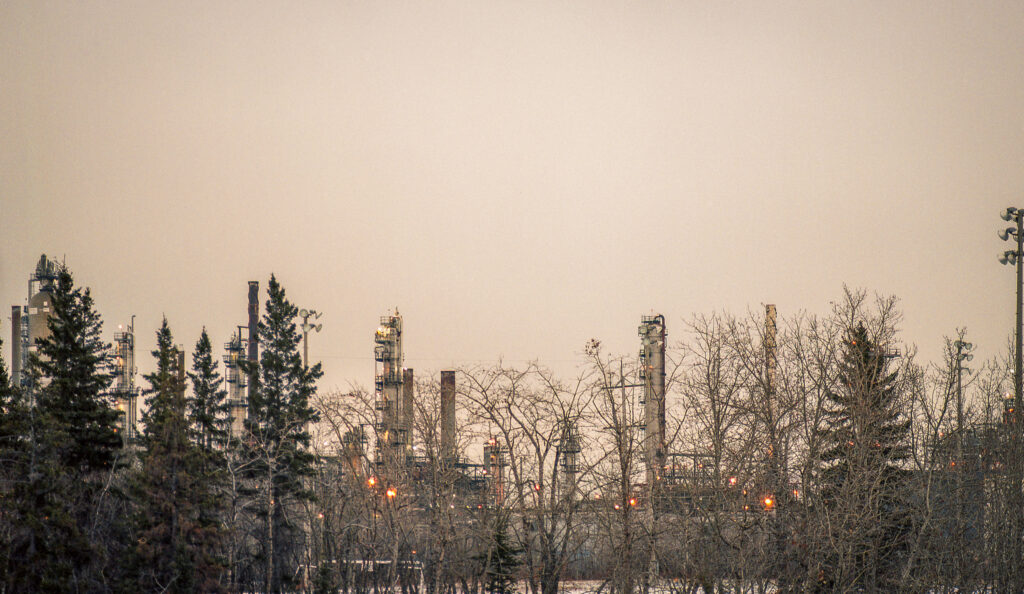
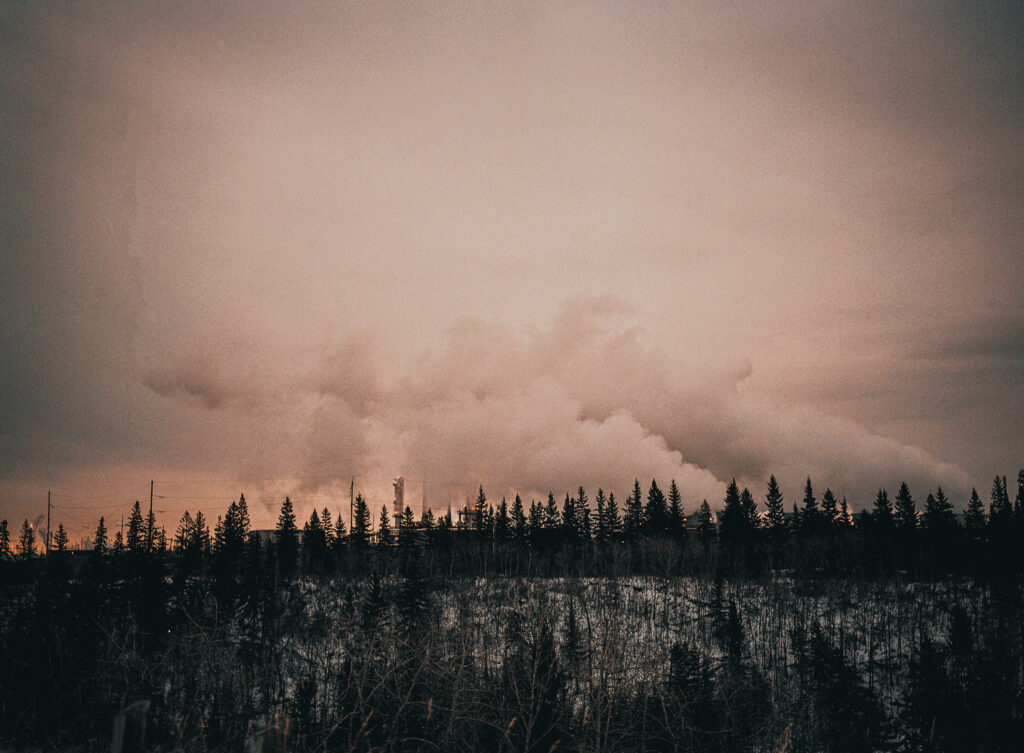
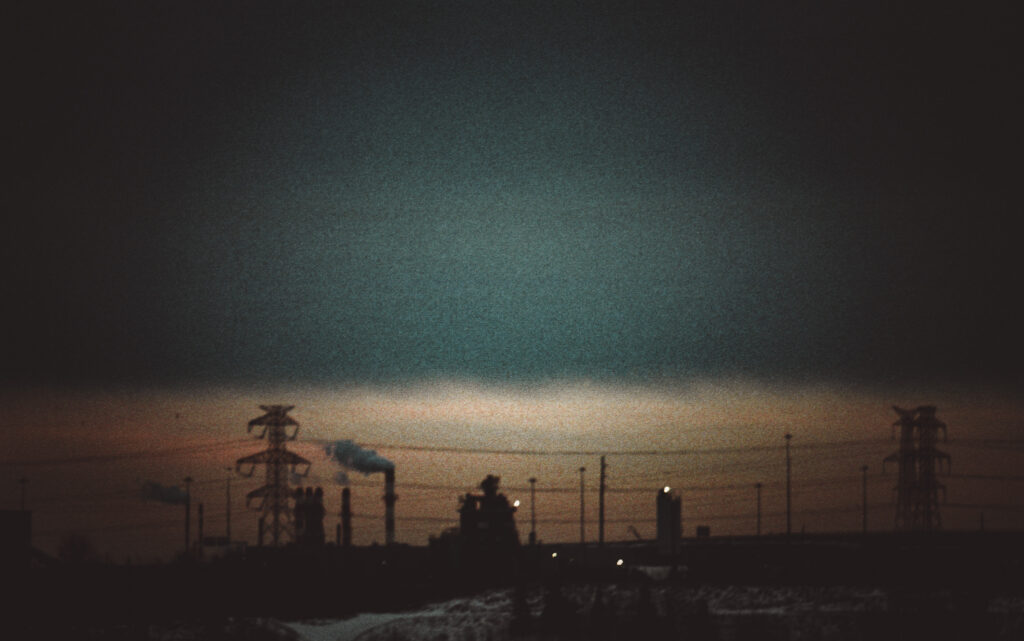
That much had not changed.
It’s outside of the city that one really finds life in vast, empty spaces. Somehow, the solitude gives the notion of a place teeming with life, where the city’s congestion and drive to be new feels old and broken. I took a road trip deep into the badlands with a friend who has opted to stay in Alberta, and who had an appreciation for the surrounding country that eased me into a quiet place of warm contemplation.
There are massive power lines that bring electricity created from coal and natural gas to the city. Wooden barns and sheds stand abandoned, the farmers pray for rain and another oil boom, ancient rivers that were once great glaciers serve as reminders of another much more brutal age, and the sky, its “underside like sharp pieces of broken pottery, stretches out like a threshing sledge on the mud.”
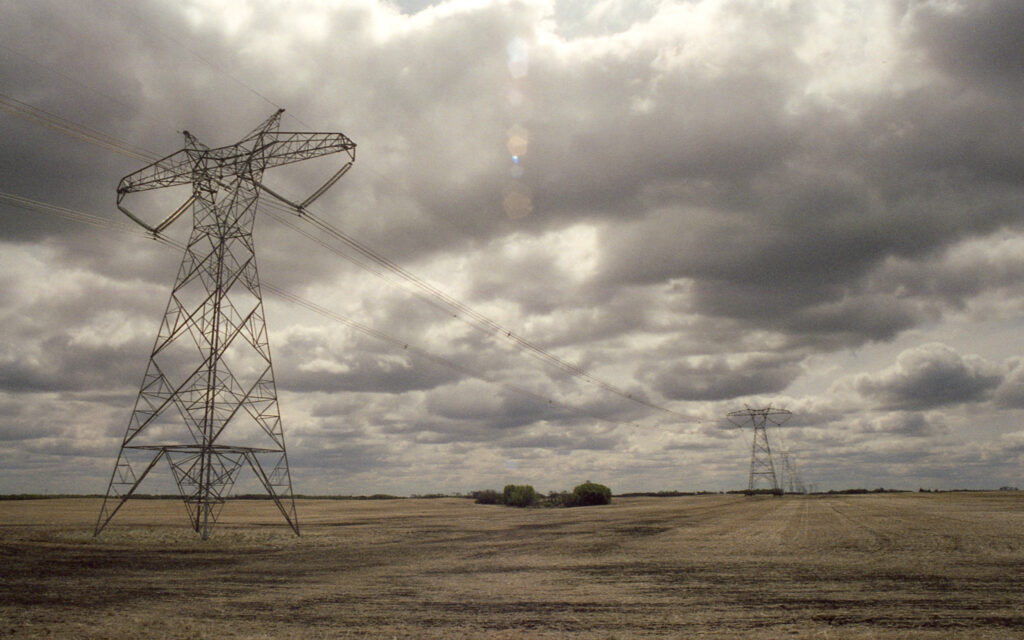
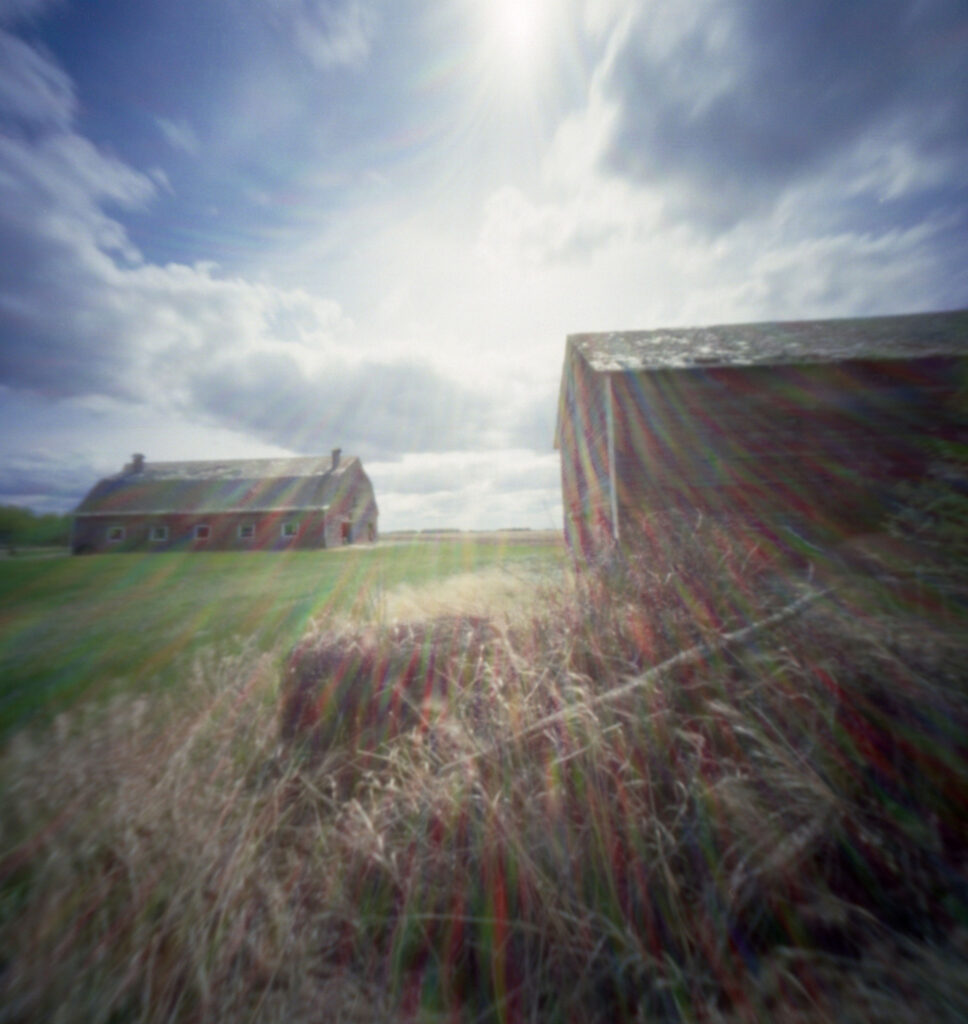
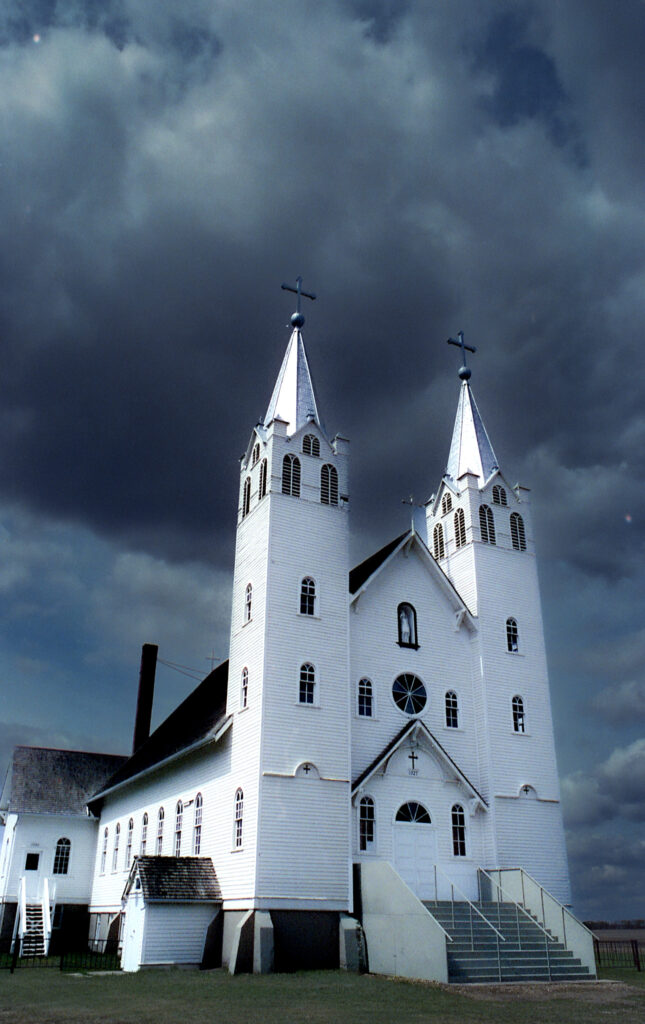
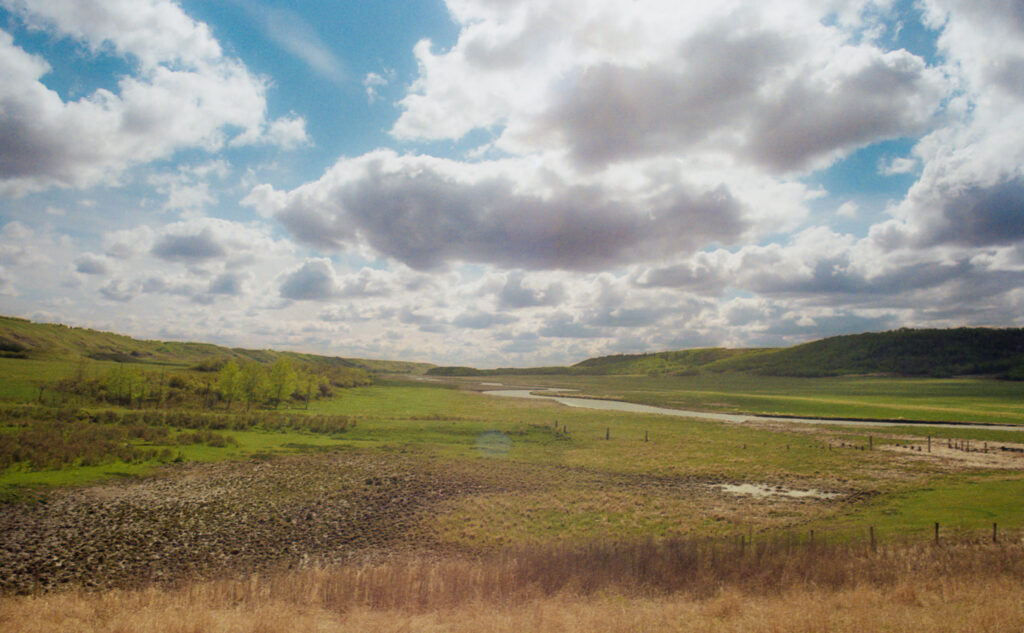
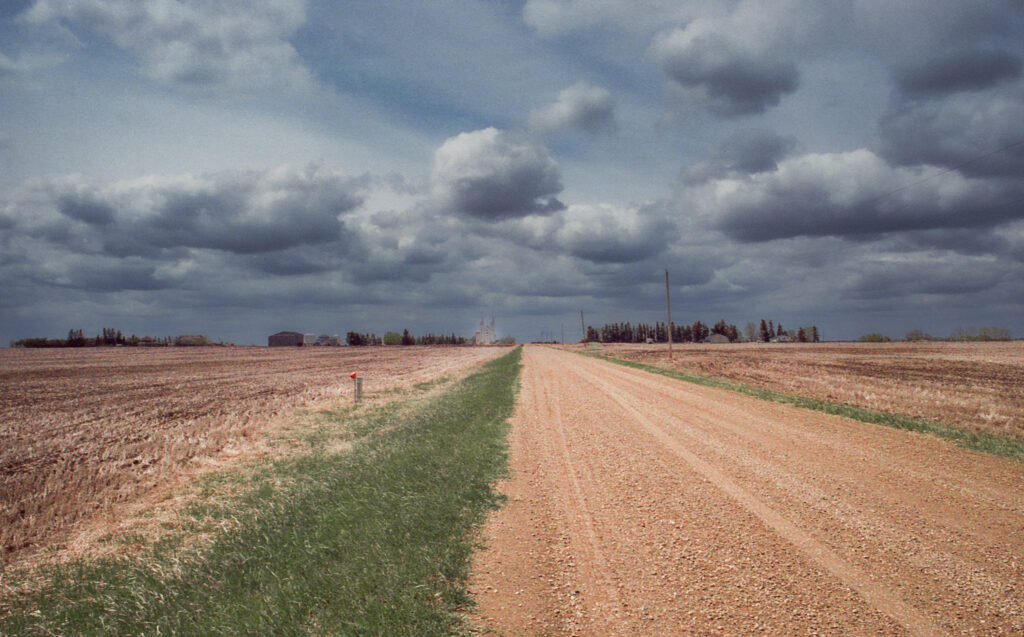
We returned to the city, neither of us talking for the last hour or so, content to revel in the beauty that surrounded us.
On my last evening, I walked to the End of Steel Lookout (another clever name for the spot where the train tracks end) on the other side of the river valley from downtown Edmonton to catch the city as the sun goes down.
As a child, we’d drive from our home, about 20 minutes from downtown, and take the Walterdale Bridge into the city. At that time, it was a steel bridge with a steel-grating deck that moved your car ever-so-slightly back and forth along the bridge as you passed over. It made the anticipation of heading into The Big City just that much more exciting and in the winter, a lot more treacherous as the ice piled up on the steel grates.
The new bridge, as we see below, is a more modern affair with actual pavement and a walking bridge that curves and spans the North Saskatchewan River. I took this photo just as the sun was going down and people returned to their newly built condos covered in reflective glass or their old apartments built in a previous oil boom in the 80s. I managed to capture a nice shot here with my Mamiya Sekor C 210mm lens.
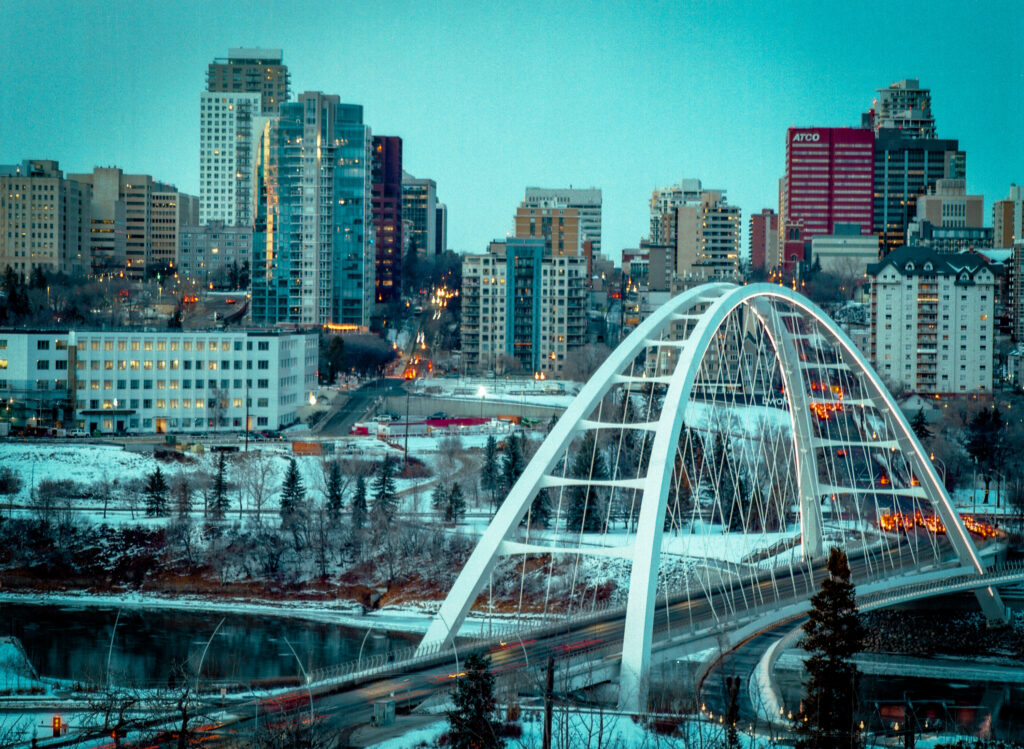
Pulling back a little bit with my handy 55mm lens (my favourite lens for my Mamiya machine), I see what, to me at least, is a city seemingly at odds with itself. Western Canada seems to have a fervent desire to remove any building more than 50 years old from having anything to do with the city. The MacDonald Hotel on the right side of the image below, built in 1915, is an outlier in Edmonton – one of the few buildings that has not been razed in favour of the new architorture that makes up the new skyline.
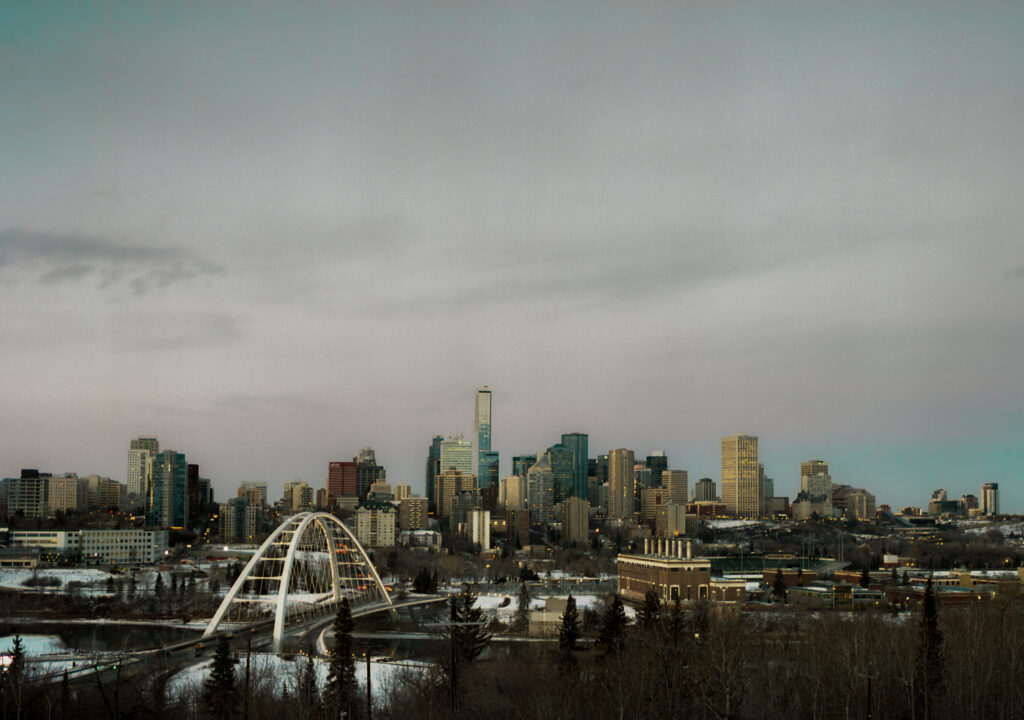
And it’s not because there is anything actually wrong with the way the city has been built. People who live in Edmonton will tell you that it’s a wonderful place to live. The river valley is an amazing place to be at any time of year, but particularly in the summer when there is a festival of some kind nearly every week.
Rather, it’s my reaction to the way the city has changed. I went home to “be at home,” to embrace my past, celebrate both the successes and the failures of that past, to make peace with it and live a better future. Meanwhile, the city had moved on, had developed, morphed into something more attractive to its residents with no thought for its Prodigal Sons. The nerve.
You can see, though, that it is a beautiful place. The image below, cropped for effect, gives you an idea of the recent growth of the city behind the High Level Bridge as the sun goes down.
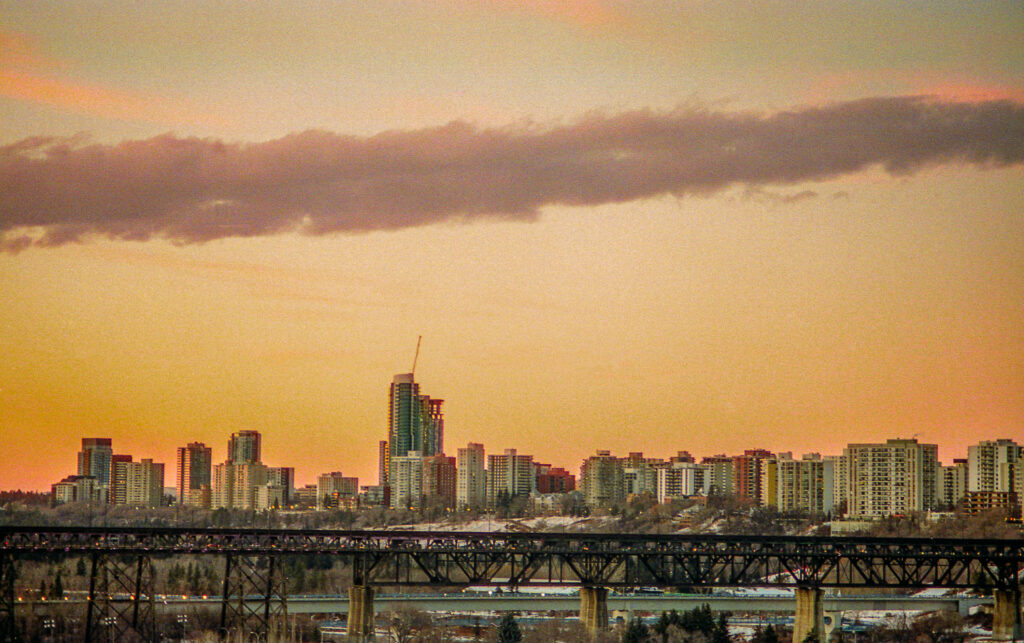
The one thing that remains—much to my delight—is that, even right in the heart of the city, the sky remains as big as the chip on my shoulder.
I’m glad I went back. I’m glad I took these photos so that I could take these memories with me, and for the time I had to build new ones. And if, as I keep telling people, everywhere is as good as who’s there, then I’ll keep coming home just for that reason alone.
Leave a comment